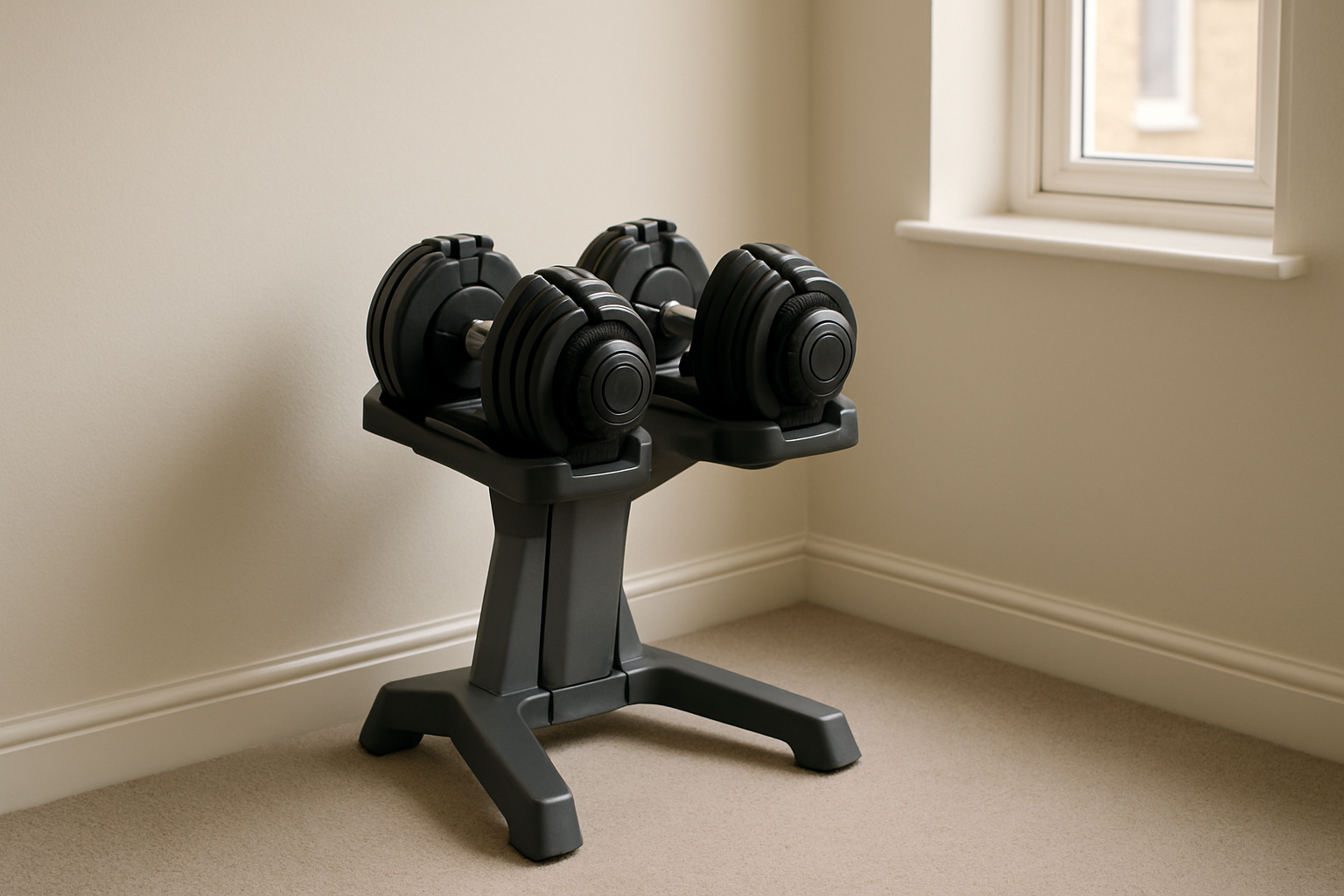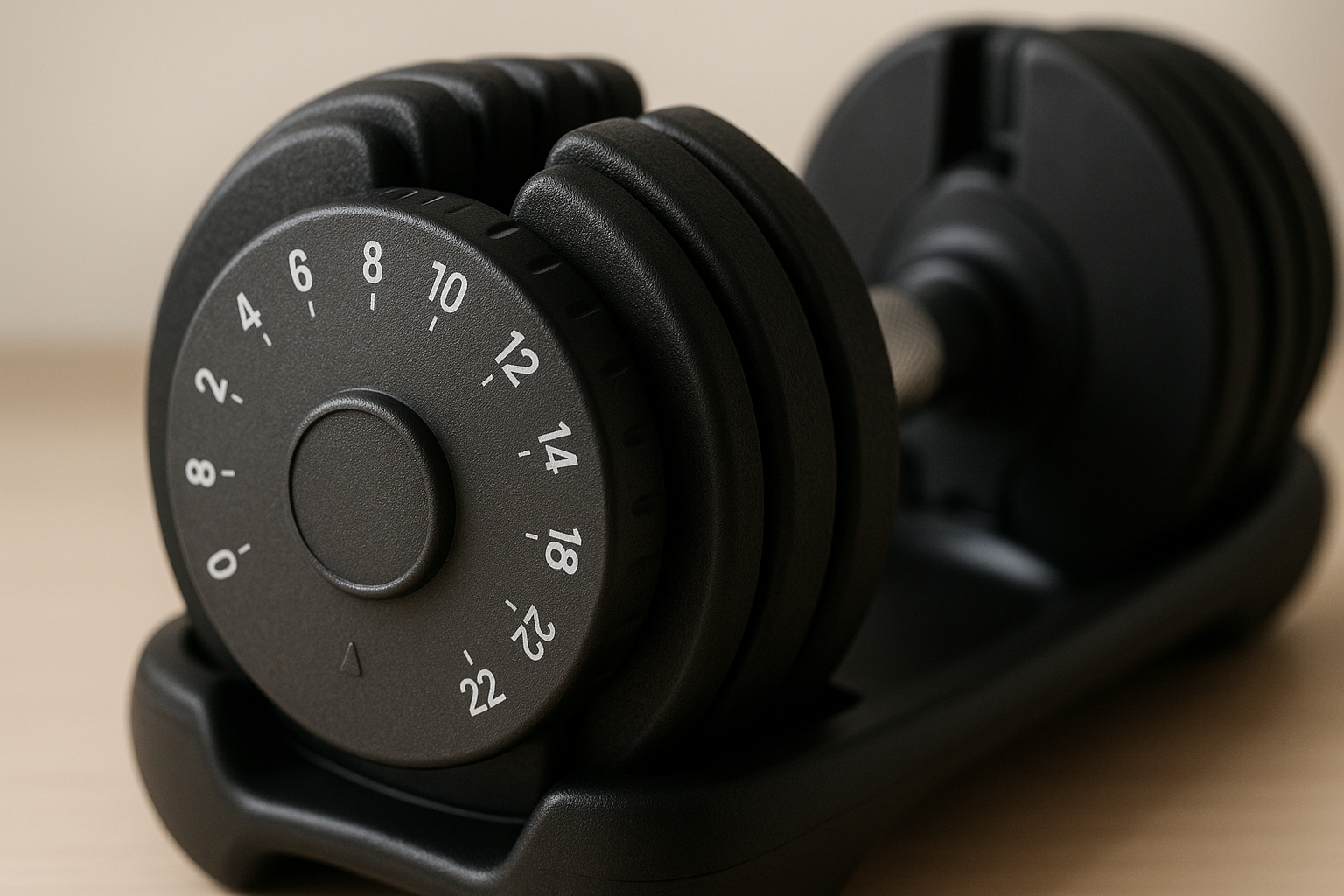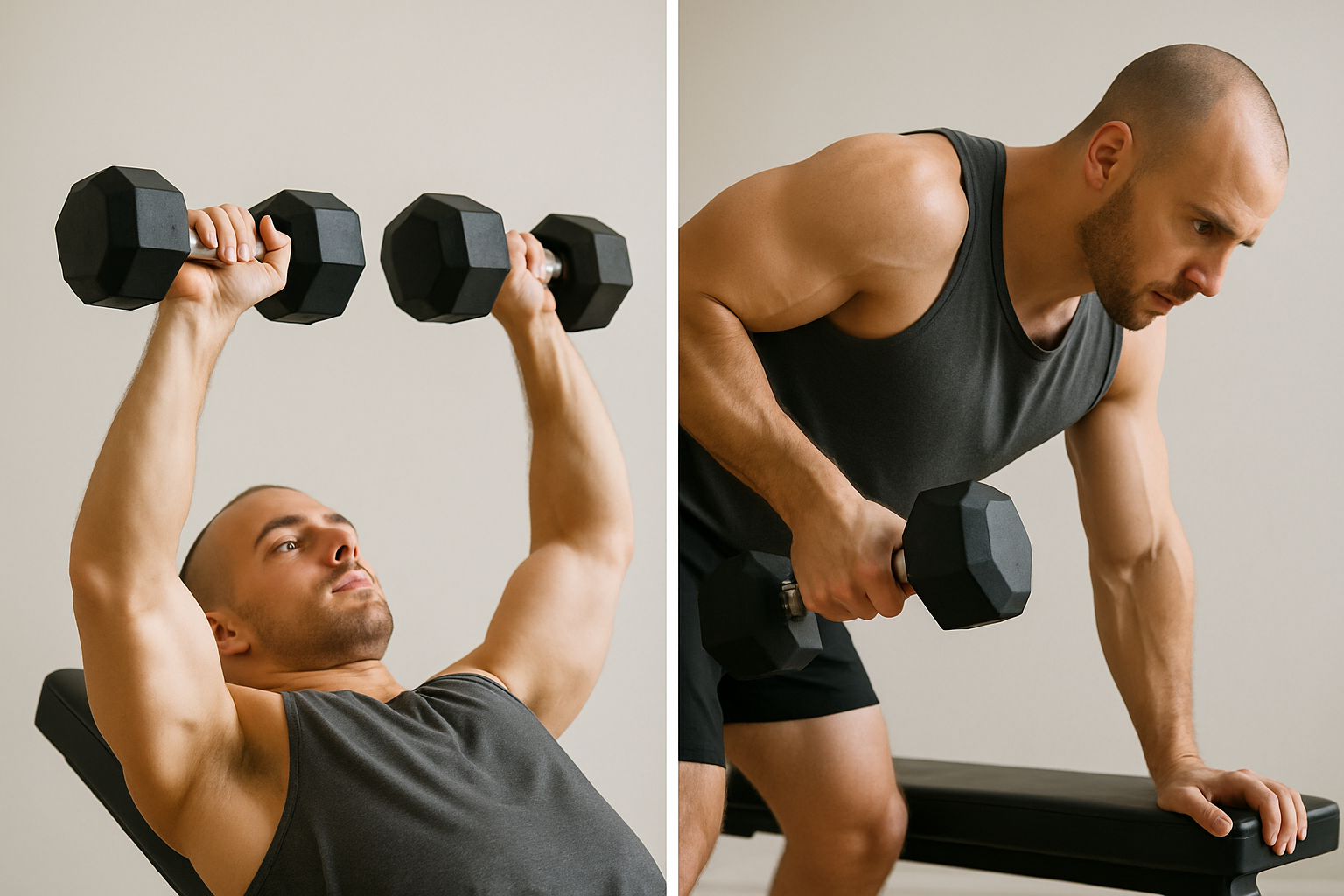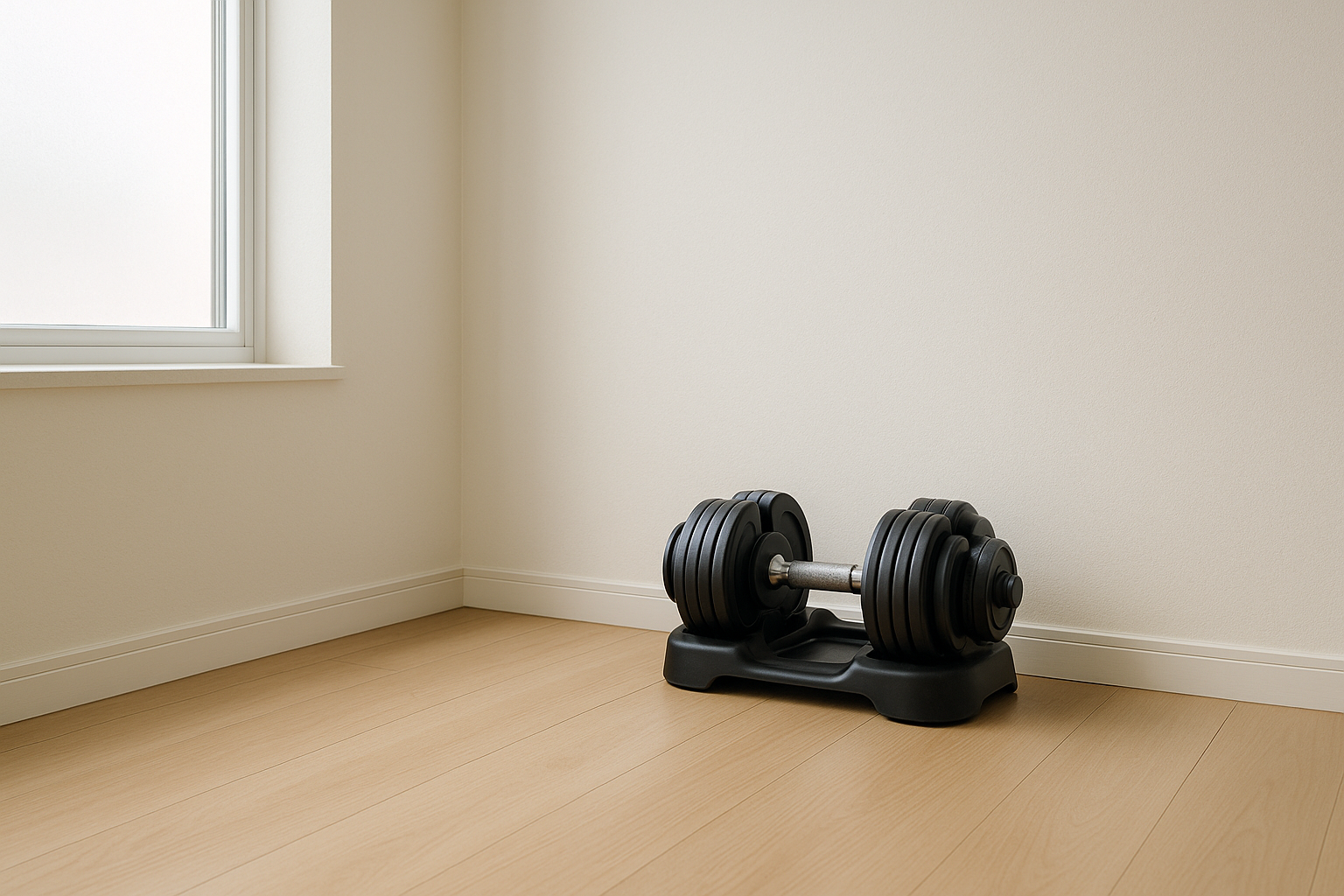Adjustable Dumbbells Buyer’s Guide (UK, 2025)
Adjustable dumbbells: the complete UK Buyer’s Guide (2025)
Reading time: ~13 minutes
Last updated: September 2025
If you want powerful strength training in a small space, adjustable dumbbells deliver full-gym versatility without racks of plates. This guide explains how they work, what to look for, which models suit UK homes and budgets, and how to train safely for results. Expect clear advice, realistic pros and cons, and evidence-led tips you can use today.
TL;DR
- Adjustable dumbbells replace multiple fixed pairs in one compact set, ideal for small UK flats and spare rooms.
- Key factors: weight range, increment size, adjustment speed, handle comfort, stability, warranty, and footprint.
- Entry sets start ~£120–£220; mid-range £220–£400; premium £400–£700+. Prices subject to change.
- Beginners: prioritise 1–2 kg increments and easy adjustments; Intermediates: go 30–50 kg per pair with solid locking; Advanced: choose premium mechanisms and heavier ranges.
- Don’t drop adjustable dumbbells; check locks regularly. Store safely to protect floors and mechanisms.
- Alternatives: spinlock dumbbells, fixed hex sets, kettlebells, or a barbell if you’ve got space and flooring.
What are adjustable dumbbells and why choose them?
Adjustable dumbbells combine an entire rack of weights into one or two handles with plates you can change quickly. They save space, reduce clutter and cost less than buying multiple fixed pairs. For small UK homes, they provide a practical route to full-body strength training without a dedicated gym room.
Benefits:
- Space-efficient: a pair can replace 10–20+ fixed dumbbells.
- Cost-effective over time, especially beyond 15–20 kg.
- Versatile for strength, hypertrophy, and conditioning.
- Portable and stowable after sessions; easier in rented flats.
In short: if you need effective strength work at home and storage is tight, adjustable dumbbells are one of the best-value solutions available.
How to choose adjustable dumbbells: buyer checklist
Your goal is to match weight range, increments, and mechanism to your training level and space. Here’s what matters most:
1) Weight range
- Beginners: 2–24 kg per dumbbell covers most movements for 6–12 months.
- Intermediates: 2–32.5 kg or 2–40 kg per dumbbell supports long-term progress.
- Advanced: 2–50 kg+ per dumbbell for heavy presses, rows and split squats.
2) Increment size
- 1–2 kg steps are ideal for upper body work and micro-loading.
- Larger 2.5–5 kg steps may feel jumpy on smaller lifts but are fine for legs.
3) Adjustment mechanism
- Dial systems (e.g., Bowflex, Nuobell): fastest; ensure plates engage cleanly.
- Selector pin/block (e.g., PowerBlock): robust and quick; stable footprint.
- Spinlock: cheap and durable; slower to change; collars must be tight.
4) Comfort and ergonomics
- Handle diameter and knurling: secure grip without tearing hands.
- Plate shape: flat sides reduce rolling and support on-the-thigh setups.
- Length at lighter settings: long handles can feel cumbersome.
5) Stability and durability
- Look for solid engagement between handle and plates with minimal rattle.
- Avoid dropping—mechanisms can be damaged even from short heights.
6) Warranty and support
- Check UK warranty length and parts availability. 1–3 years is common.
- Confirm returns process, spare parts, and aftercare.
7) Footprint and storage
- Stands reduce bending and tidy storage (useful in box rooms).
- Measure where the cradle/stand will sit; allow safe lifting space.
Pro tips
- Choose 1–2 kg increments if you’re new to lifting—progress is smoother.
- If you train with a partner, prioritise fast mechanisms to share weights easily.
- Rubber or cork flooring protects your floor and the dumbbells.
Common mistakes
- Buying too light a set—hitting the top weight in weeks stalls progress.
- Ignoring handle length and shape—awkward for curls and overhead work.
- Underestimating noise—clattery plates in upstairs flats can annoy neighbours.

Space, noise and home setup (UK realities)
Most UK flats have neighbours above or below and limited floor space. Keep sessions quiet and safe:
- Flooring: a 10–15 mm rubber mat reduces vibration and protects floors.
- Noise: avoid dropping; lower under control and set dumbbells down gently.
- Storage: choose a stand or low shelf where you can re-rack at hip height.
- Ventilation: train near a window or fan to keep sweat off mechanisms.
If you’re building a broader setup, see our guide to build a home gym for layout and flooring options.
Budget tiers and who they suit
Prices subject to change; typical 2025 UK ranges:
- Entry-level (£120–£220): basic dial or spinlock sets up to ~24 kg. Great for beginners on a budget; slower adjustments and more plastic parts.
- Mid-range (£220–£400): better mechanisms, 1–2 kg increments, up to 32.5–40 kg. Suits most home lifters for several years.
- Premium (£400–£700+): fastest adjustments, robust build, heavier ranges to 50 kg. Best for serious training and shared use.
Recommended models to consider in 2025
We don’t take affiliate fees. These examples illustrate common choices and trade-offs.
- Bowflex SelectTech 552i (2–24 kg, ~£349–£399): dial-based speed, 1–2 kg increments, compact stand options; avoid drops.
- PowerBlock Sport 50 (2–22.5 kg, ~£329–£379): selector-pin block design, stable footprint, easy micro-loading; shape feels boxy at first.
- MuscleSquad 32.5 kg Adjustable (2.5–32.5 kg, ~£299–£359): dial style, good range for intermediates; slightly longer at lower weights.
- Nuobell 32 kg (2–32 kg, ~£529–£599): premium feel, quick twist selection; excellent balance and knurled handle.
- Ativafit 25 kg (2.5–25 kg, ~£199–£249): value pick for beginners; larger jumps at higher loads.
If you plan more cardio alongside strength, explore our best rowing machines guide, and see detailed impressions in the BodyMax Oxbridge HR Air Rowing Machine review. Elliptical-bike hybrids can also complement dumbbell work—our JLL CT100 review covers a compact option. Runners: pair your lifting with our treadmill 5k training plan.

Training basics: programmes, progress, and safety
What results to expect: With 2–3 full-body sessions per week and progressive loading, most beginners can build noticeable strength and muscle within 8–12 weeks. The NHS and UK Chief Medical Officers recommend muscle-strengthening activities at least twice weekly for adults (NHS; UK CMO guidelines).
Starter routine (3 days/week, 35–45 mins)
- Warm-up (5–7 mins): brisk walk or step-ups, shoulder circles, hip hinges, bodyweight squats.
- Strength (25–30 mins):
- Goblet squat or split squat – 3 sets x 8–12 reps (RPE 7–8).
- Dumbbell bench or floor press – 3 x 8–12 reps.
- One-arm row – 3 x 8–12 reps/side.
- Hip hinge (Romanian deadlift) – 3 x 8–12 reps.
- Overhead press – 3 x 6–10 reps.
- Optional finisher: loaded carry (farmer’s walk) – 3 x 30–45 seconds.
- Cooldown (3–5 mins): gentle mobility for hips, upper back, and shoulders; easy breathing.
Progression: When you can complete the top of the rep range at RPE 7–8, increase by the smallest available increment. If increments are big (e.g., 2.5 kg), add reps first, then weight. Evidence suggests working each muscle group 2–3 times weekly supports strength gains (Schoenfeld et al., 2016).
Safety and form cues
- Neutral wrist (no overextension) and thumbs wrapped for pressing and rowing.
- Flat back and braced core for hinges and rows; exhale on exertion.
- Set dumbbells down under control—don’t drop to the floor or into the cradle.

Nutrition basics (UK context): Aim for protein across the day (~1.2–1.6 g/kg body mass if training regularly), carbs around sessions for energy, and 6–8 glasses of fluid daily (more if sweating). The NHS provides general guidance on balanced eating; adjust to your body size and goals.
Disclaimer: If you’re new to exercise, have pain, or any medical condition, consult your GP or a qualified professional before starting. Progress gradually and prioritise good form.
Maintenance and longevity tips
- Wipe handles and plates after sessions to remove sweat.
- Check collars/dials/pins weekly for tightness and alignment.
- Keep mechanisms free of grit; avoid outdoor training in damp conditions.
- Do not drop—mechanical systems can misalign or crack.
Alternatives and quick comparison
Spinlock dumbbells: Cheapest, highly durable, but slow to change. Great for steady solo sessions.
Fixed hex dumbbells: Best feel and speed, but costly and bulky above 15–20 kg.
Kettlebells: Excellent for swings, cleans and conditioning; fewer incremental steps than dumbbells.
Barbell + plates: Superior for heavy squats/deadlifts if you have space and flooring.
Quick comparison
Fastest changes: dial/twist > selector pin > spinlock. Most compact storage: adjustable on stands. Most durable to rough handling: spinlock and fixed hex. Best value for long-term progression in small spaces: adjustable dumbbells with 1–2 kg increments up to 32.5–40 kg.

Troubleshooting common issues
- Plates won’t engage: Return to the cradle, rotate dial/pin fully back to zero, reseat, then reselect weight.
- Rattle during sets: Check all locks; for spinlocks, tighten collars evenly on both sides.
- Handle too long at light weights: Choose exercises less affected (goblet squat, RDL) or upgrade to a system that shortens with load.
- Skin pinch on re-racking: Place cradles at mid-thigh height and guide in slowly.
FAQs
Are adjustable dumbbells worth it for beginners?
Yes. They deliver progressive resistance with small increments, cost less than buying many fixed pairs, and store easily in small UK homes.
What weight range should I buy?
Most beginners do well with 2–24 kg per dumbbell. If you plan to train for years or focus on legs, consider 2–32.5 kg or higher.
Dial vs spinlock—what’s better?
Dial systems are faster and more convenient; spinlocks are cheaper and very durable but slower to change.
Can I drop adjustable dumbbells?
No. Even short drops can damage mechanisms. Lower under control and use a mat to protect floors.
How do I progress if the next jump feels too big?
Add reps first, then increase weight. You can also slow the tempo or add a pause to make the same weight harder.
Do I need a stand?
Not essential but helpful for back safety and speed. Stands keep the cradle at a comfortable height and tidy your space.
How often should I strength train?
At least two days per week, covering major muscle groups, as recommended by NHS and UK CMO guidelines.
Verdict and next steps
For UK home gyms, adjustable dumbbells offer the best balance of versatility, progression, and space-saving design. Prioritise a range that lets you grow (ideally up to 32.5–40 kg), increments of 1–2 kg, a mechanism you trust, and a setup that protects both your floor and your kit. Add a simple 2–3 day/week programme and you’ll see results within weeks.
Next steps: compare mechanisms and ranges that suit your budget, then plan your weekly training. For cardio pairings and cross-training ideas, explore our best rowing machines guide, the in-depth BodyMax Oxbridge HR Air Rowing Machine review, our JLL CT100 review, and how to build a home gym. Runners can pair strength with our treadmill 5k training plan.
Related reading
- build a home gym
- best rowing machines
- BodyMax Oxbridge HR Air Rowing Machine review
- JLL CT100 review
- treadmill 5k training plan
Glossary
- Knurling: The textured pattern on a handle for grip.
- Selector pin: A pin used to choose weight on block-style dumbbells.
- RPE: Rate of Perceived Exertion; how hard a set feels from 1–10.